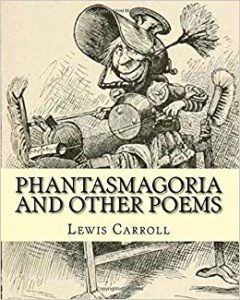John Lennon – Imagining
Listen to the Recess! Clip
| Author | Kevin Shortsleeve |
| Air Date | 10/9/2002 |

John Lennon – Imagining Transcript
When John Lennon was 11 years old, he received a copy of Lewis Carroll’s Alice in Wonderland as a birthday present. The surreal, nonsensical volume left a lasting impression on the young man. Lennon notes, “I was passionate about Alice in Wonderland and drew all the characters. I did poems in the style of “Jabber- wocky.” I used to love Alice…” By the time he was fifteen, Lennon was wishing he could write something like Alice in Wonderland. Though Lennon did eventually publish several volumes of nonsense in the style of Lewis Carroll, his connection to Alice was most keenly apparent in his songwriting with the Beatles. Lennon explained that Carroll’s stories and poems directly influenced the lyrics of two of his most famous songs, “Lucy in the Sky with Diamonds” and “I am the Walrus.”
Popular Culture critic, Michael Roos, carries the influence of Alice on Lennon further, from not just the lyrics but to the musical production itself. Roos sees Lennon’s experiments with backward music as derivative of the reverse looking-glass motif so abundant in the Alice books.
Considering all this, I took a closer look at some of Lewis Carroll’s poems and found one that I believe could have been important to Lennon. In 1869 Carroll published a collection of poems called Phantasmagoria. In this collection was a poem about verse writing that instructs:
First you write a sentence,
And then you chop it small;
Then mix the bits, and sort them out
Just as they chance to fall:
The order of the phrases makes
No difference at all.
In February of 1967, Lennon did exactly that-except not with his words but with a musical phrase. It was while working on the album “Sgt. Pepper” and on Lennon’s song, “For the Benefit of Mr. Kite.” Lennon recorded a series of individual organ notes, then marking the tape where each note began and ended, he took a scissors in hand and cut the string of notes into individual pieces, each piece containing exactly one note. Lennon then took the pile of individual notes and threw them up in the air. Then retrieving the pieces, Lennon spliced back together the notes in the order that they had chanced to fall. The end result was used as a crescendo to the song.
Having been abandoned by both parents at an early age, John Lennon’s youth was fraught with emotional pain. At age 11, as he entered adolescence, Lennon discovered Lewis Carroll and Alice’s alternate universe. That world – Wonderland – is a place Lennon regularly escaped to in his youth, often returned to as an adult – and through his music – shall continue to reside in, forever.
Sources:
Beatles Anthology: Chronicle Books, 2000.
Roos, Michael, “The Walrus and the Deacon: John Lennon’s Debt to Lewis Carroll.” Journal of Popular Culture, Volume 18, Number 1, summer, 1984.
Lennon, John. In His Own Write and A Spaniard in the Works, Signet, 1981
The Complete Lewis Carroll: Wordsworth Editions, 1996.